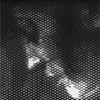/PAlogo_v2.gif) |
|
Post Reply 
|
Page <1 26272829> |
| Author | |||
AmbianceMan 
Forum Senior Member 

Joined: November 30 2009 Location: Dayton, OH Status: Offline Points: 113 |
 Posted: December 07 2009 at 13:33 Posted: December 07 2009 at 13:33 |
||
I thought you weren't responding to any more of my posts.
And besides, where in that post did I discredit you?
|
|||
 |
|||
AmbianceMan 
Forum Senior Member 

Joined: November 30 2009 Location: Dayton, OH Status: Offline Points: 113 |
 Posted: December 07 2009 at 13:45 Posted: December 07 2009 at 13:45 |
||
I will simply disagree. I believe micro evolution is extrapolated into macro evolution, but is not the same.
There is simply no proof of one species evolving into another species. I understand fossils are rare but come on, there would still be as many fossils of mid-species organisms as there are of standard species. Why aren't there? There's that one of the flying-bird-dinosaur (quick someone look it up and post it to appear more intelligent than me), but that one is still up for debate. Sure a common creationist argument..and evolutionists have been conditioned to say "oh well just another of the same creationist argument" and dismiss it without even thinking about it. Either that or go look something up that agrees with their point and paste it here. People really need to think deeply about the simple questions for themselves and use some more deductive reasoning instead of being duped by people with agendas. I mean some of the science is valid, but extrapolated to an unreasonable point.
I mean there's the platypus...but I think God was just showing his sense of humor on that one.
|
|||
 |
|||
Dean 
Special Collaborator 

Retired Admin and Amateur Layabout Joined: May 13 2007 Location: Europe Status: Offline Points: 37575 |
 Posted: December 07 2009 at 14:01 Posted: December 07 2009 at 14:01 |
||
The Theory of Evolution, natural selection, punctuated equilibrium, genetic drift, mutation, speciation, biological fitness, abiogenesis, adaption, the primordial soup, amino acids, RNA and DNA have nothing to do with "spontaneously appearing matter" - this is not a pack of cards that collapses to nothing just because the origins of the universe cannot be explained in a way that pleases you. Whether the Universe originated in a big-bang, has always existed, is bouncing around like a yo-yo, slides in from parallel multiverses or rides on the back of a giant turtle is as good as irrelevant to the origins and evolution of life. If there is some cosmic connection between quantum cosmology and quantum biology (such as quantum tunnelling) then it is possible that there is a relationship to the origins of both, however that does not effect the mechanisms of either.
I think you are attempting to overcomplicate the issue by using areas of cosmology that we haven't solved yet as proof that everything else is wrong.
As I volunteered before - show us some of those scientific explanations that don't make sense to you and let's see if they make sense to me or anyone else here.
Anyway...
Here is conundrum for you: A photon is called a massless particle since it has no rest mass (also called invariant mass), in particle/wave duality a photon particle is simply energy in the form of electromagnetic radiation and as we all know it propagates through a vacuum at the speed of light. Applying the Einstein equation we can calculate the effective mass of that energy packet, (m=E/cē), which would be the effective mass of a photon, (the mass that is affected by gravity for example - as demonstrated by gravity lens effect of light bending around large stellar masses) - this mass is called the relativistic mass.
A body (let's call it matter since it is a mass that occupies a volume) that radiates a single photon loses rest mass equivalent to the relativistic mass of that photon - that photon can propagate (travel) through a vacuum and strike another body which will gain rest mass by the same amount. That is called a closed loop system and the conservation of mass is preserved since no mass is lost/destroyed - the combined overall rest mass is the same. Now consider a system where the second body did not exist and so the photon never arrived at a destination, remaining forever as a free particle - the rest mass of that system is now light by the mass of one photon - the photon can never rest since it is always moving at the speed of light - it remains as massless energy - this is called an open loop system and the conservation of mass fails. The question then becomes - is the singularity present prior to the big-bang (assuming that is the concept you are arguing against) an open or closed loop system?
|
|||
|
What?
|
|||
 |
|||
Adams Bolero 
Forum Senior Member 

Joined: January 07 2009 Location: Ireland Status: Offline Points: 679 |
 Posted: December 07 2009 at 14:02 Posted: December 07 2009 at 14:02 |
||
|
Here is a video of the Astronomer and Christian Owen Gingerich talking about evolution and how it relates to religion: Edited by Adams Bolero - December 07 2009 at 14:03 |
|||
 |
|||
AmbianceMan 
Forum Senior Member 

Joined: November 30 2009 Location: Dayton, OH Status: Offline Points: 113 |
 Posted: December 07 2009 at 14:25 Posted: December 07 2009 at 14:25 |
||
I will freely admit that I have not delved into that aspect of photon creation, so I will not say that your information is correct, or incorrect. I would have to read more about the subject.
However, in practical studies of x-ray photons for example, the mass is not transferred to photons. The "body" (tungsten in this case) emits photons when one of its shell electrons are either knocked out of orbit, or electrons bending through the atom (caused by the charged nucleus) release energy because they are slowing down. The tungsten retains its mass when it refills the affected electron shell. The incident photon also does not add net mass to whatever it strikes.
Also, wave/particle duality does not mean that a photon IS a wave and a particle, it just exhibits SOME of the behaviors, depending on where in the em spectrum it resides.
On cursory reading, I would say that to answer that, I would have to assume a hypothetical situation rather than an actual situation, which would not be a strong argument for either case.
Edited by AmbianceMan - December 07 2009 at 14:26 |
|||
 |
|||
Dean 
Special Collaborator 

Retired Admin and Amateur Layabout Joined: May 13 2007 Location: Europe Status: Offline Points: 37575 |
 Posted: December 07 2009 at 16:10 Posted: December 07 2009 at 16:10 |
||
Just a quick comment while I ponder other things -
The wave/particle duality does mean that a photon is a simultaneously a wave and a particle as demonstrated by Young's double slit experiment using single photons.
The position in the em spectrum determines the energy level of the photon (and therefore of the wave) not whether it behaves as a wave or as a particle. Irradiating matter with em-radiation of shorter wavelengths releases electrons of higher energy, but the quantised effect does not change - one photon releases one electron. Edited by Dean - December 07 2009 at 16:18 |
|||
|
What?
|
|||
 |
|||
Mr ProgFreak 
Forum Senior Member 

Joined: November 08 2008 Location: Sweden Status: Offline Points: 5195 |
 Posted: December 07 2009 at 16:13 Posted: December 07 2009 at 16:13 |
||
|
^ only today I've read in Victor Stenger's new book that photons are just matter ...
|
|||
 |
|||
Dean 
Special Collaborator 

Retired Admin and Amateur Layabout Joined: May 13 2007 Location: Europe Status: Offline Points: 37575 |
 Posted: December 07 2009 at 16:15 Posted: December 07 2009 at 16:15 |
||
|
...want to expand on that Mike?
|
|||
|
What?
|
|||
 |
|||
Negoba 
Prog Reviewer 

Joined: July 24 2008 Location: Big Muddy Status: Offline Points: 5208 |
 Posted: December 07 2009 at 16:26 Posted: December 07 2009 at 16:26 |
||
|
Ummm....isn't this 50-100 years old quantum mechanics?
|
|||
|
You are quite a fine person, and I am very fond of you. But you are only quite a little fellow, in a wide world, after all.
|
|||
 |
|||
Mr ProgFreak 
Forum Senior Member 

Joined: November 08 2008 Location: Sweden Status: Offline Points: 5195 |
 Posted: December 07 2009 at 16:30 Posted: December 07 2009 at 16:30 |
||
|
^^ of course.
Stenger's topic is the often cited wave/particle duality, and how it is sometimes used by religious people - by analogy - as a possible explanation for the soul/mind "duality" (reasoning that the mind/brain is mere matter, and that the soul/waves transcend matter). What Stenger says about photons is that their wave "aspect" is not a property of individual photons, but "the statistical property of an ensemble of many particles". So a single photon is just matter, while a group of photons can be observed as a wave (function), depending on the resolution on the detection equipment. @Negoba: Yes, Stenger mentions that "what we observe is exactly what physicists have been saying about quantum mechanics since the 1920s". Edited by Mr ProgFreak - December 07 2009 at 16:32 |
|||
 |
|||
Negoba 
Prog Reviewer 

Joined: July 24 2008 Location: Big Muddy Status: Offline Points: 5208 |
 Posted: December 07 2009 at 19:22 Posted: December 07 2009 at 19:22 |
||
|
It's extremely hard to wrap your brain around. I've heard it discussed somewhere as a "probability wave." But using it as an analogy to brain/mind/soul is truly pseudoscience. The best analogy is brain is hardware and mind is software. The exist on different domains and knowing you have PC doesn't let you know that I'm running Cakewalk to record my album. There is of course the possibility that there are multiple layers of emergent phenomenon in between, and there are higher levels of organization of mind, one of which is called culture. I DO however draw a parallel between the wave / particle duality and the duality between manifestation and potential, the difference between what is in this exact moment vs what can be. This is the fun stuff, the edge of our current knowledge. This is where we who like asking the big questions love to dance in the waves and debris. (poet I'm not) And here is where I'm not so sure science is going to give us all the answers. I, in fact, think math with give us next big step forward, not science. But even then there are somethings even further beyond....
Funfunfunfun. |
|||
|
You are quite a fine person, and I am very fond of you. But you are only quite a little fellow, in a wide world, after all.
|
|||
 |
|||
AmbianceMan 
Forum Senior Member 

Joined: November 30 2009 Location: Dayton, OH Status: Offline Points: 113 |
 Posted: December 07 2009 at 20:35 Posted: December 07 2009 at 20:35 |
||
Young's experiment: copied and pasted: "In quantum mechanics, the double-slit experiment (often referred to as Young's experiment) demonstrates the inseparability of the wave and particle natures of light and other quantum particles."
The word "quantum particle" is used, and this has even been up for debate. Some of his theory has changed. The key word here is "natures". They are not both a wave and a particle. They only share some behaviors.
Also from more recent (2008) college level physics textbook by Bushong (one of the foremost experts on radiation physics):
"Photons have no mass and no charge. They travel at the speed of light (c=3x10^8 m/s) and are considered energy disturbances in space." (underline mine)
Bushong, Steve. Radiation Science for Technologists, Physics, Biology, and Protection 9th ed. St. Louis, MO. Mosby, 2008 (page 53)
And also: "
Particle interpretation: If light exists as particles, the intensity of both slits will be the sum of the intensity from the individual slits.When the experiment was conducted, the light waves did indeed show these interference patterns. A third image that you can view is a graph of the intensity in terms of position, which matches with the predictions from interference. " His experiment actually reinforced the wave theory over the particle theory.
Look up this and come back to me. But even so, nobody has conceded on a single point with me, and it will probably continue since I am a "crazy creationist" and could not possibly know anything about real science. Wonder how many sources it would take?
Heck here's another....Einstein:
"In 1905, Albert Einstein published his paper to explain the photoelectric effect, which proposed that light traveled as discrete bundles of energy. The energy contained within a photon was related to the frequency of the light. This theory came to be known as the photon theory of light (although the word photon wasn't coined until years later). "
And yes, the position in the em spectrum does determine it's wave/particle behavior. Directly. See above textbook page 63. The word "rays" are used to describe em radiation with more particle-like properties (x-rays, gamma rays) and "waves" the other (microwaves, radio waves). He also discusses how photons interact with matter, and this assumes photons are not matter.
I really don't understand. How could you accept the big bang theory being taught in schools? You HAVE to say matter originated spontaneously from nothingness in order for it to work, buying into Sagan's "cosmic egg". Evolutionists must find another theory. It does not work. But accordingly, evolutionary scientists are already on the ball, and even they are realizing it doesn't work. The public of course will be soon to follow.
Edited by AmbianceMan - December 07 2009 at 21:23 |
|||
 |
|||
Padraic 
Special Collaborator 

Honorary Collaborator Joined: February 16 2006 Location: Pennsylvania Status: Offline Points: 31165 |
 Posted: December 07 2009 at 20:35 Posted: December 07 2009 at 20:35 |
||
But Young's experiment directly contradicts this. Single photons create diffraction patterns. |
|||
 |
|||
Negoba 
Prog Reviewer 

Joined: July 24 2008 Location: Big Muddy Status: Offline Points: 5208 |
 Posted: December 07 2009 at 21:28 Posted: December 07 2009 at 21:28 |
||
|
General relativity says energy and mass can switch back and forth. The total mass / energy of the Universe is conserved, but that's the whole point of the famous equation.
A photon has potential mass, so to speak...
Or I may be oversimplifying this. It's been awhile since these classes for me.
Einstein was skeptical of quantum mechanics in general, hence "God doesn't play dice."
|
|||
|
You are quite a fine person, and I am very fond of you. But you are only quite a little fellow, in a wide world, after all.
|
|||
 |
|||
AmbianceMan 
Forum Senior Member 

Joined: November 30 2009 Location: Dayton, OH Status: Offline Points: 113 |
 Posted: December 07 2009 at 21:35 Posted: December 07 2009 at 21:35 |
||
In a way, yes. But not directly. The energy is absorbed by an electron for example and causes the electron to move somewhere else, thereby causing a change in mass of another particle. So in and of itself, it does not add or remove mass.
Like being absorbed by the cones in your eye, triggering an impulse through the nervous system (in which particles move across synapses for example).
See Einstein's photoelectric effect theory.
To simplify the whole thing, an electron gives up it's energy as a photon, and this photon is absorbed as energy, causing heat for example.
As an aside, here's one theory. Please point out the craziness in the following:
"So much so that we have decided to call it "the standard model" At early times there was so much energy floating about that matter and anti-matter popped into existence, then annihilated each other. This went on for a while but due to a deep asymmetry in nature slightly more matter was created than anti-matter. This eventually condensed out as the universe expanded and cooled. In about 11 minutes after the point at which our physics doesn't work. The technical term for stuff in the universe before the matter froze out is Yelm. "
Oh really? And the energy came from where?
So it just "popped into existence" eh?
So could everything just "pop out of existence"?
People should be locked up for spewing stuff like this.
Not directed at you negoba but while I'm here....someone was asking for it earlier. Edited by AmbianceMan - December 07 2009 at 22:03 |
|||
 |
|||
Mr ProgFreak 
Forum Senior Member 

Joined: November 08 2008 Location: Sweden Status: Offline Points: 5195 |
 Posted: December 08 2009 at 01:47 Posted: December 08 2009 at 01:47 |
||
Not really. Have a look at this pattern: http://en.wikipedia.org/wiki/Double-slit_experiment#Results_observed It shows that the diffraction pattern emerges from the single particles (photons or electrons) hitting the sensors. So whenever you observe a wave, it's really because your resolution isn't high enough. At least that's, from my impression, what Stenger also says. Edited by Mr ProgFreak - December 08 2009 at 05:11 |
|||
 |
|||
Dean 
Special Collaborator 

Retired Admin and Amateur Layabout Joined: May 13 2007 Location: Europe Status: Offline Points: 37575 |
 Posted: December 08 2009 at 04:14 Posted: December 08 2009 at 04:14 |
||
The energy of a photon is directly proportional to the frequency of the wave (Max Planck... E=hf)). High frequency waves have high energy content and low frequency waves have low energy. Once we get below the levels of visible light the energy of each photon is incredibly small, and decreases with frequency until it is swamped (in detectors) by thermal noise (Boltzmann) and cannot be measured. The quantised particle behaviour remains unchanged, you just can't detect it at lower frequencies.
|
|||
|
What?
|
|||
 |
|||
Dean 
Special Collaborator 

Retired Admin and Amateur Layabout Joined: May 13 2007 Location: Europe Status: Offline Points: 37575 |
 Posted: December 08 2009 at 05:18 Posted: December 08 2009 at 05:18 |
||
I actually don't get what you are driving at here. This experiment has been repeated with electrons, (which are descrete particles and do have mass), and it produces the same results.
"Photons have no [invariant] mass" (parenthasis mine)...
because they have energy and velocity they also have momentum (p=E/c) which means they have relativistic mass (which is so unbelievably small as to be undetectable).
How selective do you have to be to "prove" your point?
Here is the following paragraph from the article you selectively quoted:
"At the time, this seemed to conclusively prove that light traveled in waves, causing a revitalization in Huygen's wave theory of light, which included an invisible medium, ether, through which the waves propagated..."
(My underline - the word "seemed" indicates that the effect appears to support your conclusion but does not)
And a few paragraphs later...
"It became possible to have a light source that was set up so that it emitted one photon at a time. This would be, literally, like hurling microscopic ball bearings through the slits. By setting up a screen that was sensitive enough to detect a single photon, you could determine whether there were or were not interference patterns in this case."
and...
"Just such an experiment was performed and, in fact, it matched Young's version identically - alternating light and dark bands, seemingly resulting from wave interference."
and here's all the text for all to read: http://physics.about.com/od/lightoptics/a/doubleslit.htm
|
|||
|
What?
|
|||
 |
|||
Mr ProgFreak 
Forum Senior Member 

Joined: November 08 2008 Location: Sweden Status: Offline Points: 5195 |
 Posted: December 08 2009 at 05:56 Posted: December 08 2009 at 05:56 |
||
|
Apparently the big breakthrough came with quantum electrodynamics - initially (pre 19th century) light was supposed to be particles, then it was waves, then it was both, and now it's back to particles again (albeit a really strange form of particles). ;-)
This is yet another example how scientists are prepared to refine or even discard theories as new evidence is found. |
|||
 |
|||
Dean 
Special Collaborator 

Retired Admin and Amateur Layabout Joined: May 13 2007 Location: Europe Status: Offline Points: 37575 |
 Posted: December 08 2009 at 06:01 Posted: December 08 2009 at 06:01 |
||
|
|||
|
What?
|
|||
 |
|||
Post Reply 
|
Page <1 26272829> |
| Forum Jump | Forum Permissions  You cannot post new topics in this forum You cannot reply to topics in this forum You cannot delete your posts in this forum You cannot edit your posts in this forum You cannot create polls in this forum You cannot vote in polls in this forum |